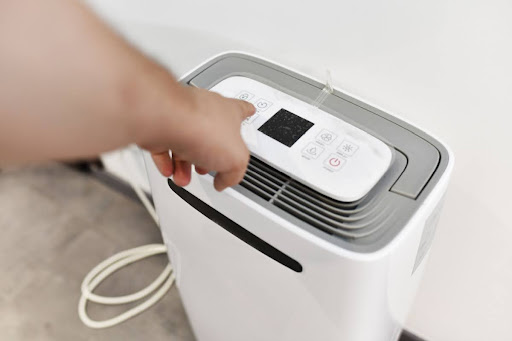Humidity is a tricky thing. Too much can make your home feel stuffy and uncomfortable, but too little can cause dry skin and static electricity.
For most of us, humidity levels fluctuate throughout the year, and there comes a time when you need to add or subtract moisture from the air. That’s where dehumidifiers come in handy. But, many homeowners aren’t quite sure when to power down these trusty appliances.
Humidity control is a fascinating thing, and we’ll show you when exactly you need to turn those dehumidifiers off and start adding some moisture to your air.
When Is Dehumidifier Season?
Dehumidifiers excel at removing water vapor from the air, creating an environment that’s just right for you and your home. Ideal humidity levels hover between 30% and 50%, striking a balance that keeps mold growth at bay and static electricity in check.
Typically, dehumidifier season kicks off as temperatures rise and humid summers settle in. You’ll notice the air feeling heavy and sticky, signaling it’s time to fire up your dehumidifier.
Pay attention to your basement dehumidifier, as these areas are prone to higher humidity levels year-round. The goal is to create a comfortable space where you can breathe easy and protect your home from moisture-related issues.
Time to Turn Your Dehumidifier Off? Not If You See These Signs
Knowing when to keep your dehumidifier running is all about tuning into what the weather’s doing. If you’re still noticing these telltale signs, it’s a clear indicator that humidity is still affecting your home:
- Condensation on windows or mirrors
- Musty odors linger in the air
- Damp spots on walls or ceilings
- Mold or mildew growth
- Feeling clammy or sticky indoors
Should Dehumidifiers Run All the Time?
You might be wondering if it’s okay to let your dehumidifier run non-stop. The truth is, it depends on your specific situation. In areas with consistently high humidity levels, like basements or particularly damp climates, running a dehumidifier continuously can be beneficial. However, for most homes, it’s not necessary to have your dehumidifier running 24/7.
Instead, aim to maintain optimal humidity levels between 30% and 50%. Many modern dehumidifiers come equipped with built-in monitors that automatically turn the unit on and off to maintain your desired humidity level. This saves energy and prevents your space from becoming too dry.
Turn Them Off in the Winter — Unless It’s a Warm Winter
As winter approaches and temperatures drop, you might think it’s time to bid farewell to your dehumidifier until spring. In most cases, you’d be right.
Cold air typically holds less moisture, naturally lowering humidity levels in your home. Plus, running your heating system further dries out the air, often making dehumidifiers unnecessary during the winter months.
However, warm winters throw a wrench into your plan. If you’re experiencing an unusually mild winter or if you live in a climate with warm weather all year round, humidity can still be an issue. Keep an eye out for signs of excess moisture, like condensation on windows or a damp feeling in the air. In these cases, you might need to run your dehumidifier occasionally, even during winter.
Note: Basements are another exception to the winter rule. These spaces can remain damp year-round, so your basement dehumidifier might need to keep working through the colder months.
Upgrade Your Dehumidifier If It’s Not Getting the Job Done
Sometimes, despite your best efforts, you might find your dehumidifier struggling to keep up with excess humidity. If you’re constantly emptying the water tank, the air still feels damp, or you’re noticing signs of mold growth, it might be time for an upgrade.
Newer models are often more energy-efficient and come with features like auto-shutoff, programmable humidity levels, and even Wi-Fi connectivity for easy monitoring. When shopping for a new unit, consider the size of the space you need to dehumidify. A unit that’s too small will work overtime without achieving the desired results, while one that’s too large might remove too much moisture, leading to excessively dry air.
Look for Energy Star-certified models to save on electricity bills. Also, consider features like a built-in pump for continuous drainage, which can be a game-changer if you’re tired of manually emptying the water tank. The right dehumidifier can make a world of difference in your home’s comfort and air quality. So don’t hesitate to upgrade if your current unit isn’t cutting it – your lungs (and your energy bill) will thank you.
A1 Plus Electrical, Heating and Air Solves Your Humidity Issues
At A1 Plus Electrical, Heating and Air, we’re here to help you breathe easier. We focus on improving indoor air quality, including expert dehumidifier installations. We also provide air duct sealing and installations to keep your HVAC system running at peak efficiency. Our team is ready to tackle any humidity challenges you might face so that your home stays comfortable year-round. Why let excess moisture dampen your spirits when you can reach out to us for all your indoor air quality needs?



